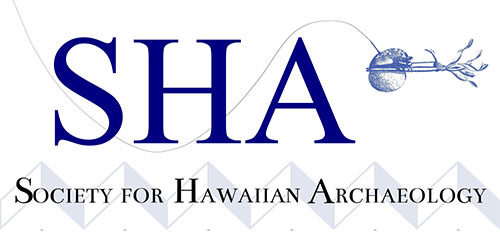STATEMENT OF ETHICAL GUIDELINES FOR HAWAI‘I
Society for Hawaiian Archaeology
Preamble
In response to the ongoing efforts of archaeologists to do research that is sensitive of and relevant to the needs of living communities, this statement of ethical guidelines is set forth to reaffirm the Society for Hawaiian Archaeology’s (SHA) commitment to the preservation of the cultural heritage of Hawaii’s people. It was drafted as an effort to reach common ground between archaeologists and the contemporary Hawaiian community and was adopted through amendments to the SHA Code of By-Laws on October 16, 2010. It augments, but does not replace, the Society of American Archaeology “Principles of Archaeological Ethics” which, by its incorporation in the SHA Code of By-Laws, Article III, Section 1(1) and (2), sets, in part, expectations for SHA and its members.
Archaeologists have a responsibility to behave with the utmost respect for cultural heritage while preserving the integrity of the scientific process and the right of researchers to exercise and express their independent scientific judgment. Cultural heritage includes the material remains of the past, the people who created those remains, cultural landscapes, and the living communities who have a connection to the cultural sites, materials, and knowledge that archaeologists study.
In Particular, the SHA recognizes the special connection between Native Hawaiians and cultural sites in Hawai‘i. The term “cultural sites” is used here to acknowledge that archaeological places remain part of the living landscape for Hawaiian people. With these things in mind, and understanding that these commitments will continue to evolve, the members of SHA agree to aspire to the following principles and values and to recognize their importance.
1. Consultation, collaboration, and partnership:
a. To consult with the living descendants of those whose cultural resources are the focus of research and resource management.
b. To adhere to reasonable levels of transparency in shared objectives and communication during consultation.
c. To recognize and respect the role of Native Hawaiians in matters relating to their cultural heritage.
d. To build equitable partnerships by collaborating with Native Hawaiian cultural practitioners and individuals with whom archaeologists share responsibility for the protection and perpetuation of the living culture.
e. To respect cultural protocols established during consultation.
f. To acknowledge that Native Hawaiians have a fundamental interest in the protection, management, interpretation, and presentation of their cultural heritage.
g. To recognize the important role of Native Hawaiians as cultural consultants.
2. Stewardship, preservation, conservation, and perpetuation:
a. To acknowledge the diversity and dynamic nature of Native Hawaiian traditional beliefs, values, and practices.
b. To acknowledge that important relationships between indigenous peoples and their cultural heritage exist irrespective of legal ownership and serve as the basis for understanding a sense of place and identity.
c. To acknowledge the importance of indigenous cultural heritage as it relates to the wellbeing of indigenous people.
d. To encourage and aid Native Hawaiian stewardship of Hawaiian cultural heritage.
3. Knowledge production, dissemination, and appropriate research methods:
a. To engage in and promote the use of best practices that are scientifically sound, are respectful of cultural sensitivities, and are consistent with prevailing laws and regulations.
b. To practice and promote minimally invasive methodologies while maximizing the knowledge produced.
c. To recognize the importance of traditional practices and knowledge for interpreting the past.
d. To respect the interpretation of Hawaiian cultural sites by Native Hawaiians while upholding the integrity of archaeological investigations and interpretations.
e. To produce and disseminate the results of archaeological investigations in a timely manner.
f. To recognize the importance of reaching a broad audience, with a particular emphasis on the local communities that are involved in the archaeological effort.
g. To adhere to scientific standards of reporting, but also disseminate knowledge in ways that inform and engage the local community.
4. Public education, training, and outreach:
a. To promote and develop tools both for local people and visitors to the islands that facilitates sensitivity to and greater understanding of Hawaiian cultural sites.
b. To play an active role in the public education concerning Hawaiian archaeology, history, and culture.
c. To support formal archaeological training programs in Hawaiian archaeology, especially for Native Hawaiians.
